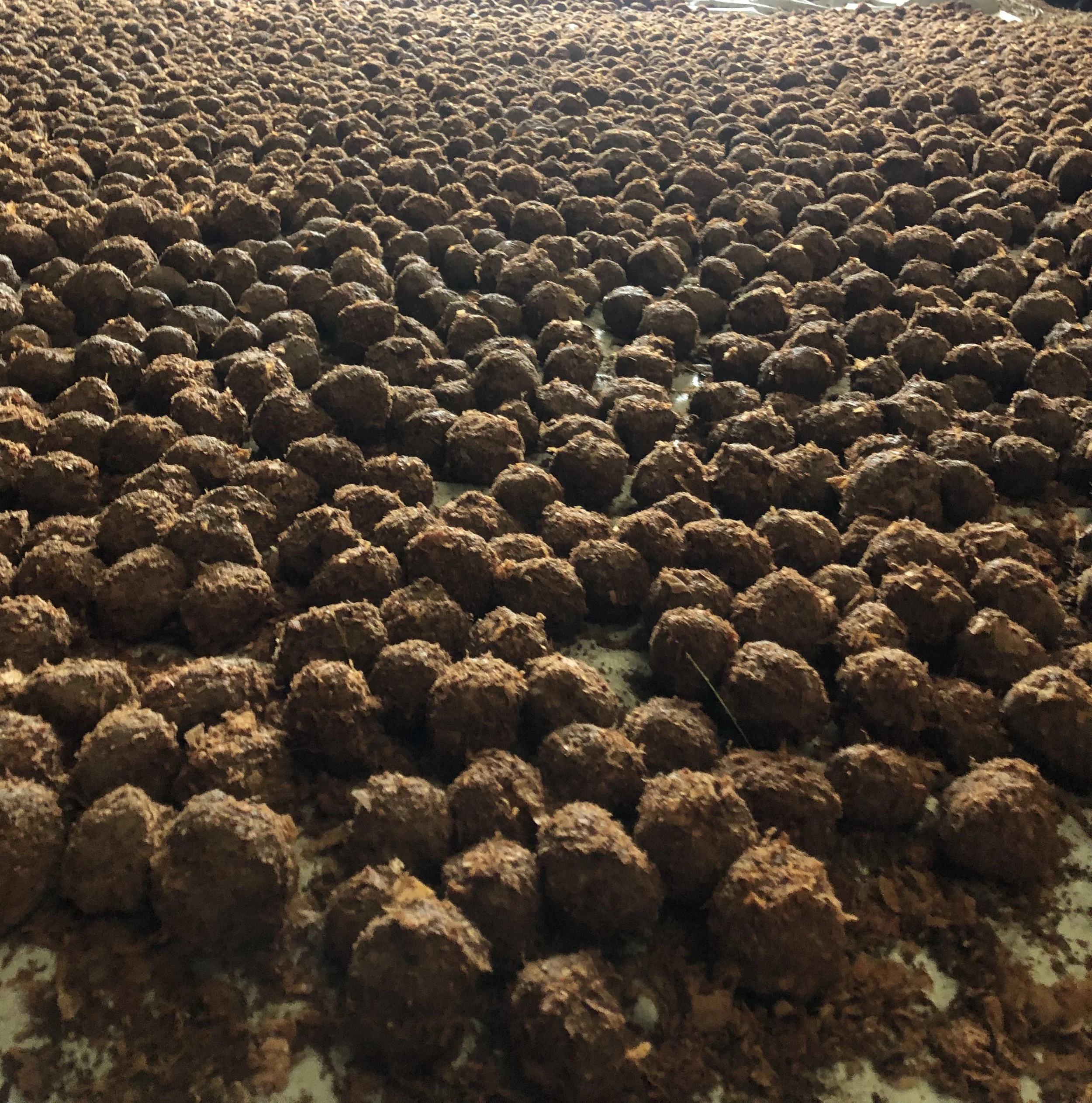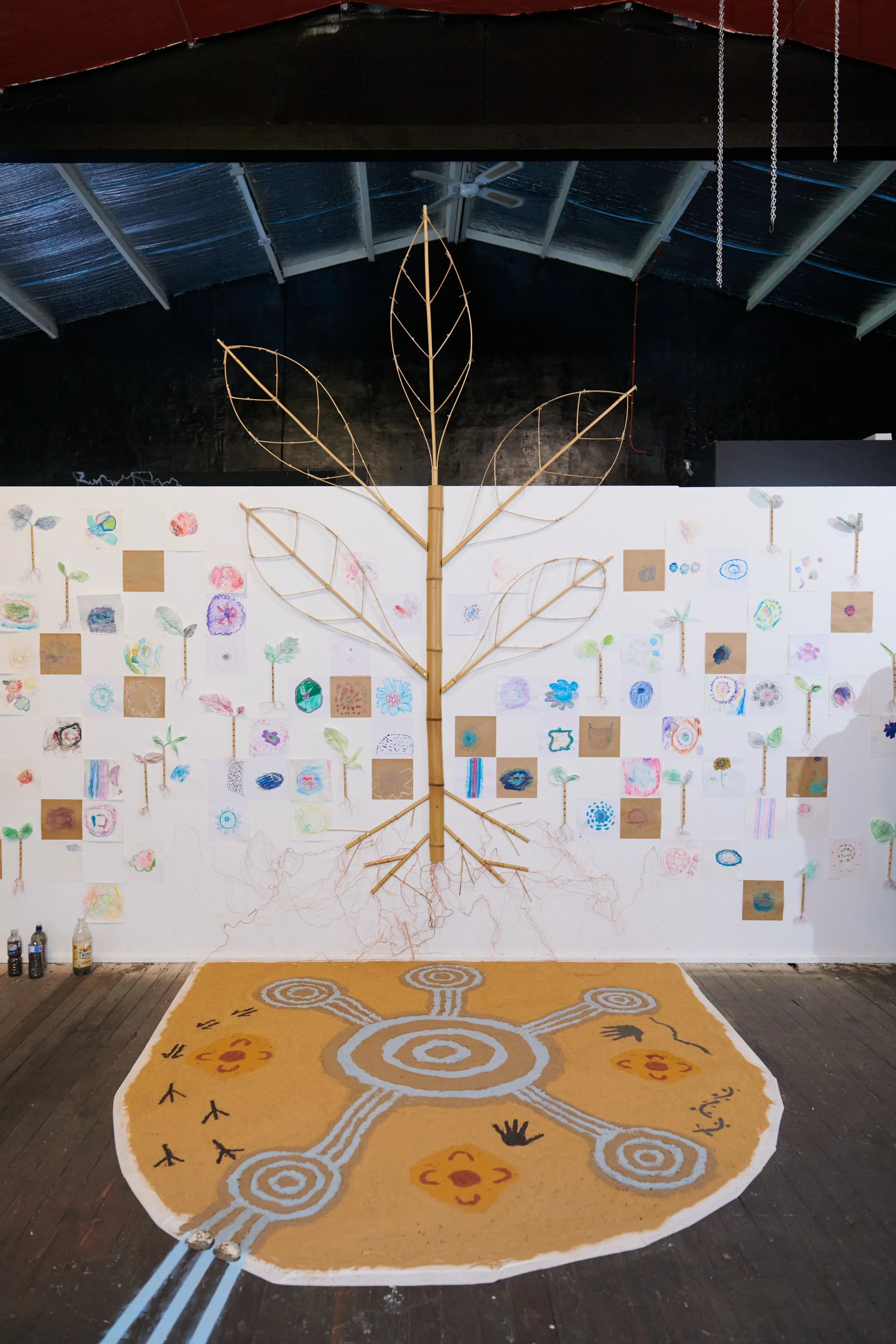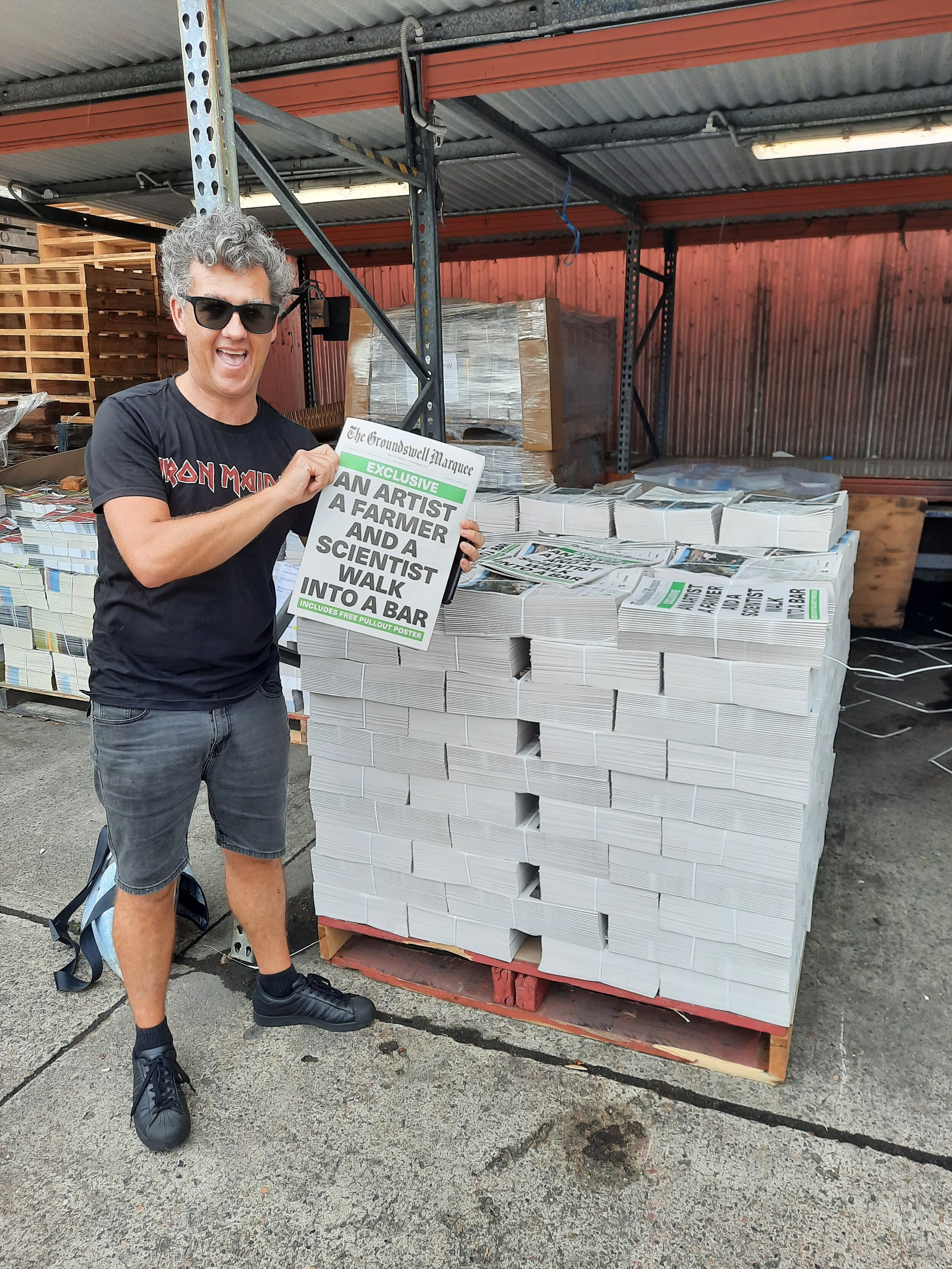by Ian Milliss
How do we do it?
We start with the fragmentary spaces in the future ruins
I suppose we like to think that KSCA is as strange as nature, a complex mix of personalities, skills and interests. Sometimes we all work together, other times in informal sub groups, and we all have our own separate projects. Disturbed is an iteration of an even larger project Succession and large projects, while they may embody the attitudes of many of us, usually have one or more initiators who drive it along. In this case it is Imogen Semmler who has kept it on the rails, making sure that a million tiny details were never forgotten.
Within its overall conceptual framework multiple smaller projects have been developed from logos to indigenous dance, feasts to publishing, sewing to ink making and t-shirt printing. Only some of them are here, the very nature of succession is that it leads to iterative sequences of work and so other bits will appear in the future - the very idea of succession embodies so much of what we mean by adaptive cultural change.
The last(?) mud map
Erika’s to do list
Imogen had been proposing the project for years but it took several weekend long workshops at Airbnbs around Kandos, an infinitely long series of emails and WhatsApp conversations, regular scheduled monthly zooms and a lot of talking to get it just to the starting line when the real production work began.
The location had to be secured, with all bureaucratic niceties sorted out, site visits so we had it clear what we were thinking about, budgets and funding applications done, and then finally actual physical production. It is amazing where a project can lead you, like on a trail through op shops in the hunt for cheap woollen blankets that then had to be laboriously sewn - it’s hard to imagine how Erika did this with two young children. The site had to be planned and the walking track mowed. The logistics of food, the scheduling for site invigilation, the accommodation, the list just goes on. But this is a comparatively small project compared to cementa itself, managed this year by KSCA member Leanne Thompson, all going on in the background.
All projects have these demands. What is most interesting is how a group of artists, notoriously unmanageable undisciplined disorganised artists, actually succeed at working together. We have done it for ten years now and although we are just a small group of fifteen I suspect we are tapping into a much earlier and more basic way of humans working together. In fact isn’t fifteen reputedly the optimum successful group size?
Sewing blankets
Our weekend residencies that precede any major event are intense long brainstorming sessions where we work through scenarios and ideas until, like a giant jigsaw, a plan comes together. But as Mike Tyson famously said “Everyone has a plan until they get punched in the mouth” and that punch is usually the sheer overwhelming effort of getting it all done. That’s when we start trimming it down to the realistically possible, but in truth the whole process has always been fun, tiring, but always in retrospect a joy. Here is a gallery of most us in one of the houses we regularly rent.
Dave Graeber (with David Wengrow) in his book The Dawn of Everything describes the archaeological evidence of tens of thousands of years of anarchic organisation that preceded the last few thousand years of coercive hierarchical “civilisation”. Graeber suggested that instead of being rule-following economic drones of capitalism, we are essentially playful. The most basic level of being is play rather than economics, fun rather than rules, goofing around rather than filling in forms*. And this is exactly how KSCA works and how we manage to rub along together.
Eloise printing t-shirts
Artists often amplify barely perceptible trends arising in human society and I think that nestling inside our work is an illustration of succession, of how underlying ancient modes of human existence may reassert themselves after the disturbance of climate change destroys our brief period of “civilisation”, a future period of play and love in the ruins. The ruins of Kandos are the tiny fragmentary glimpse of this.
*Stuart Jeffries interviewing Graeber in The Guardian, March 2015
Influencer at work












































